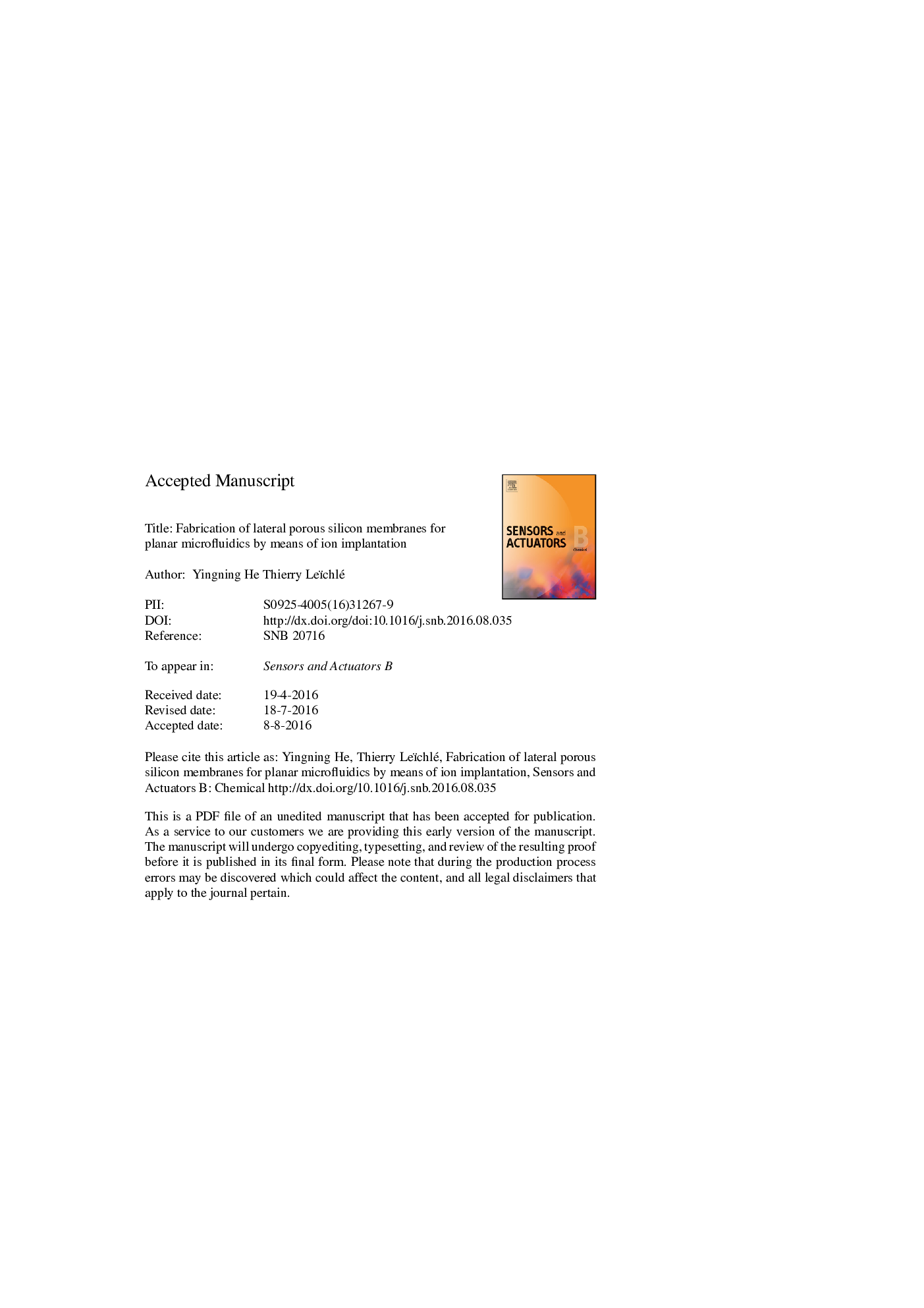| Article ID | Journal | Published Year | Pages | File Type |
|---|---|---|---|---|
| 7142609 | Sensors and Actuators B: Chemical | 2017 | 13 Pages |
Abstract
We introduce a new fabrication method based on ion implantation to create lateral porous silicon membranes and integrate them into planar microfluidic devices. Our proposed method relies on the fact that the formation of porous silicon by anodization highly depends on the dopant type and concentration, which can be manipulated by ion implantation. In order to confine the porosification at desired locations within silicon steps bridging microchannels, we use boron and phosphorus implantation to respectively create a p++ layer buried in an n-type silicon substrate, and a protective n-type surficial layer. The use of a metal electrode patterned onto the silicon step for current injection during anodization enables pores to propagate laterally during the membrane formation. The optimal implantation doses and energies leading to the required boron and phosphorus profiles are determined by means of process simulation and further confirmed by SIMS analysis. We demonstrate that the proposed fabrication process leads to the creation of lateral porous silicon membranes with open-ended pores adequately bridging microchannels and that we are able to manipulate the pore size (â¼3-30Â nm) and membrane porosity (â¼15-65%) by adjusting the current density during anodization. The adequate dead-end filtration capability of the fabricated membranes was tested and demonstrates the interest of the presented fabrication process for microfluidic applications.
Related Topics
Physical Sciences and Engineering
Chemistry
Analytical Chemistry
Authors
Yingning He, Thierry Leïchlé,
